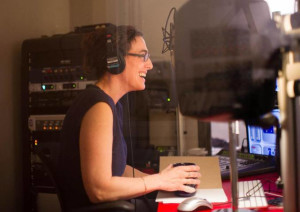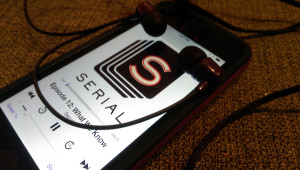The Podcast Lives On
Published on February 17, 2016, at 7:00 p.m.
by Eliza Sheffield.
It’s no secret that podcasts have become extremely popular in the past few years, outliving their namesake by two years and counting (RIP iPod Classic). In fact, the percentage of Americans who have listened to a podcast in the past month has almost doubled since 2008, from 9 percent to 17 percent in January of 2015.
Podcast culture lends itself to flexible consumption, which fits in well with the rise of media intake through smartphones, especially because Apple now includes a podcast app on its devices. The podcast scene functions similarly to YouTube in that it offers a path to self-made fame for ordinary people by giving users a platform and voice. Relatively low recording costs for audio production have lowered the bar of entry for self-starters and created opportunities across many genres and niche podcasts.
But self-made stars aren’t the only ones taking advantage of the trend. With podcasts’ high following has come a resurgence in news partnerships.
Radio has led the way, with traditional media outlets following in the wake. Because its content is already positioned for an aural audience, it’s no surprise that National Public Radio’s standard programming has consistently topped the podcast charts, especially segments like the “TED Radio Hour” and “Fresh Air.”
And then there’s “Serial.”
Besides being the fastest podcast to reach 5 million streams and downloads in iTunes history, “Serial” also opened the door for other outlets to use podcasts for news and culture coverage.
The first season of the wildly popular weekly podcast featured a journalistic investigation of a questionable murder conviction in 1999 and reached Americans at a critical time of faltering faith in the judicial system. “Serial” is produced by “This American Life,” a 20-year-old, well-known radio show hosted by Ira Glass and produced by Chicago Public Radio.
After “Serial”’s success, blended journalistic storytelling has been on the rise, and traditional print media publications have teamed up with radio programs to meet consumption demands and tell the human story in fresh and exciting ways.
Beginning in December 2015, The New York Times joined with Boston NPR to produce the “Modern Love” podcast, an audio adaptation of the popular “Modern Love NYT” personal essay column. The Huffington Post recently launched “Candidate Confessional,” and the latest “This American Life” episode, “My Damn Mind,” doubled as a printed Times feature on mental health violence in hospitals.
So what does this increase in media collaboration across platforms mean?
Storytelling matters. More and more brands are embracing their roles as creative storytellers, which applies to journalists and PR practitioners alike. It’s up to media organizations to apply consistent journalistic integrity to ever-evolving platforms, podcasts included.
New to the podcast scene? Catch up on 2015’s best, according to the Atlantic.






